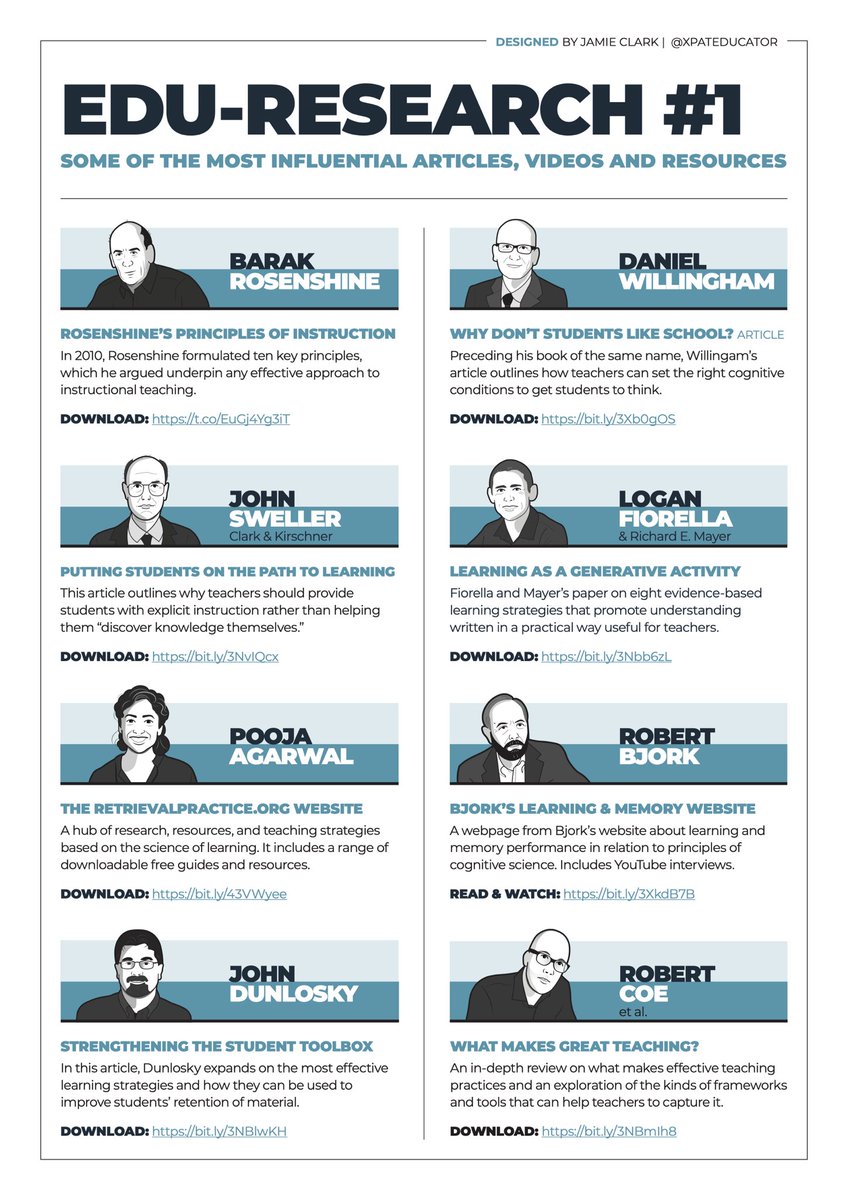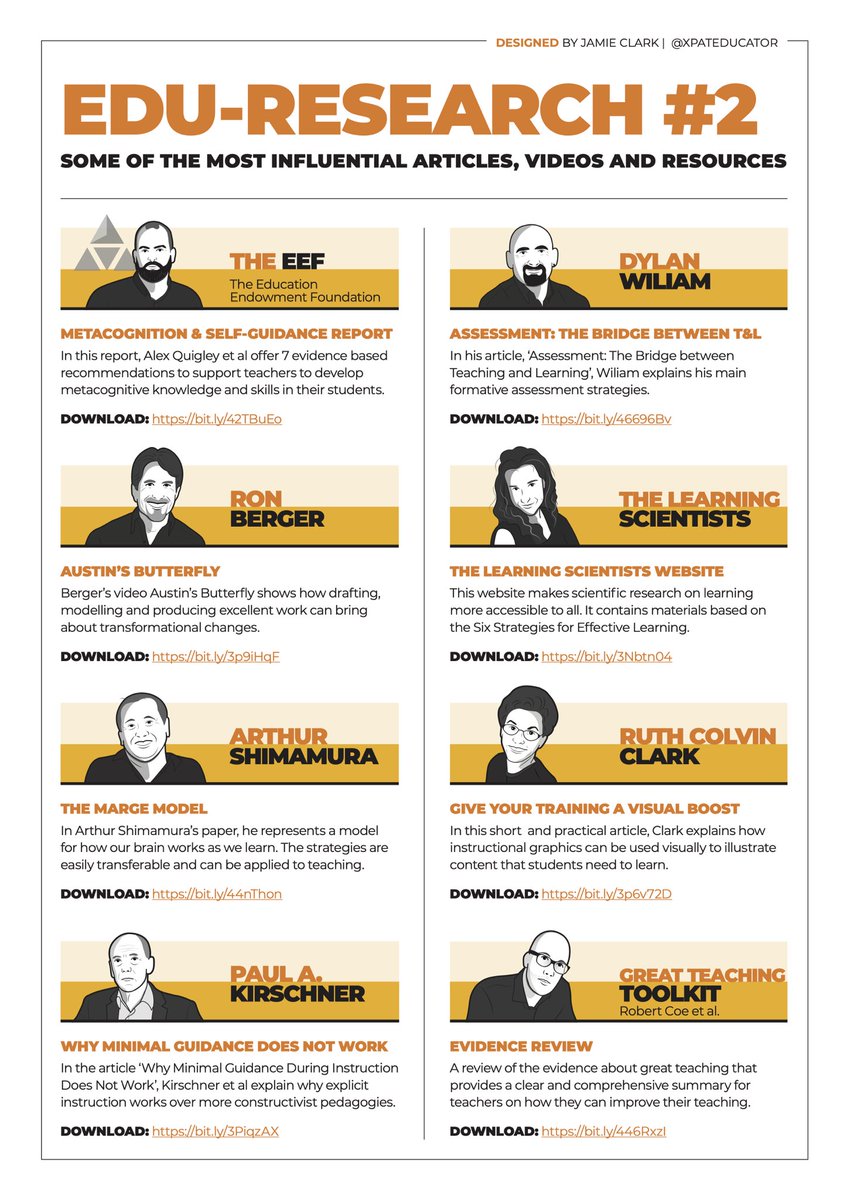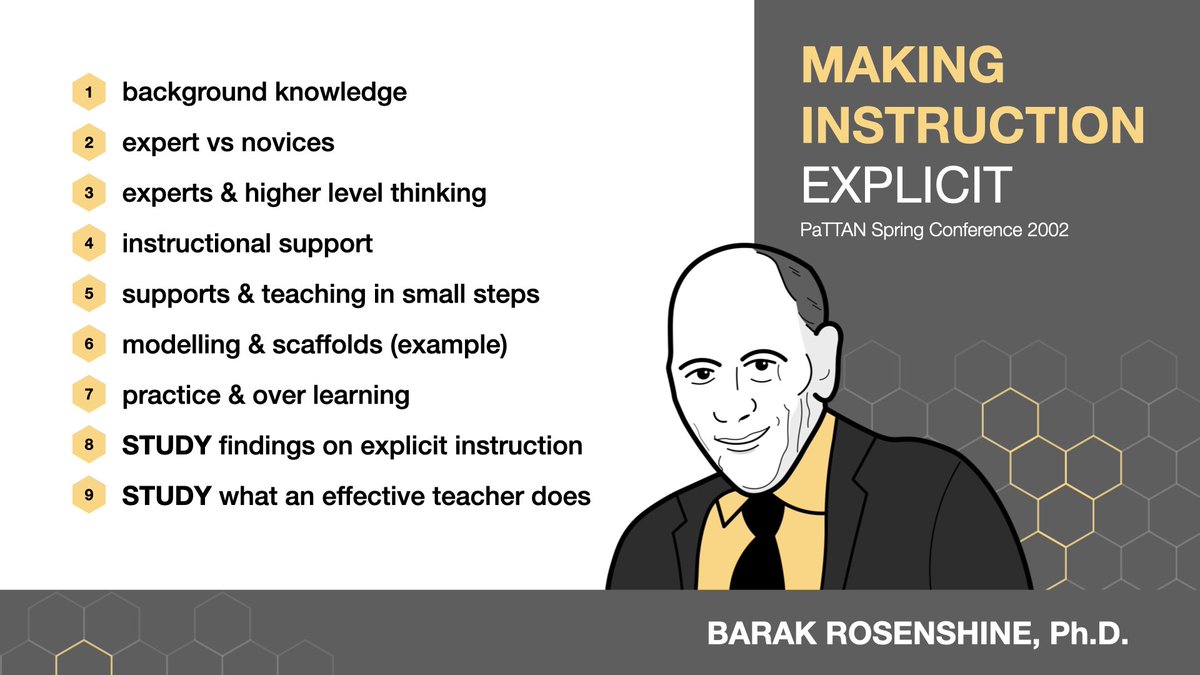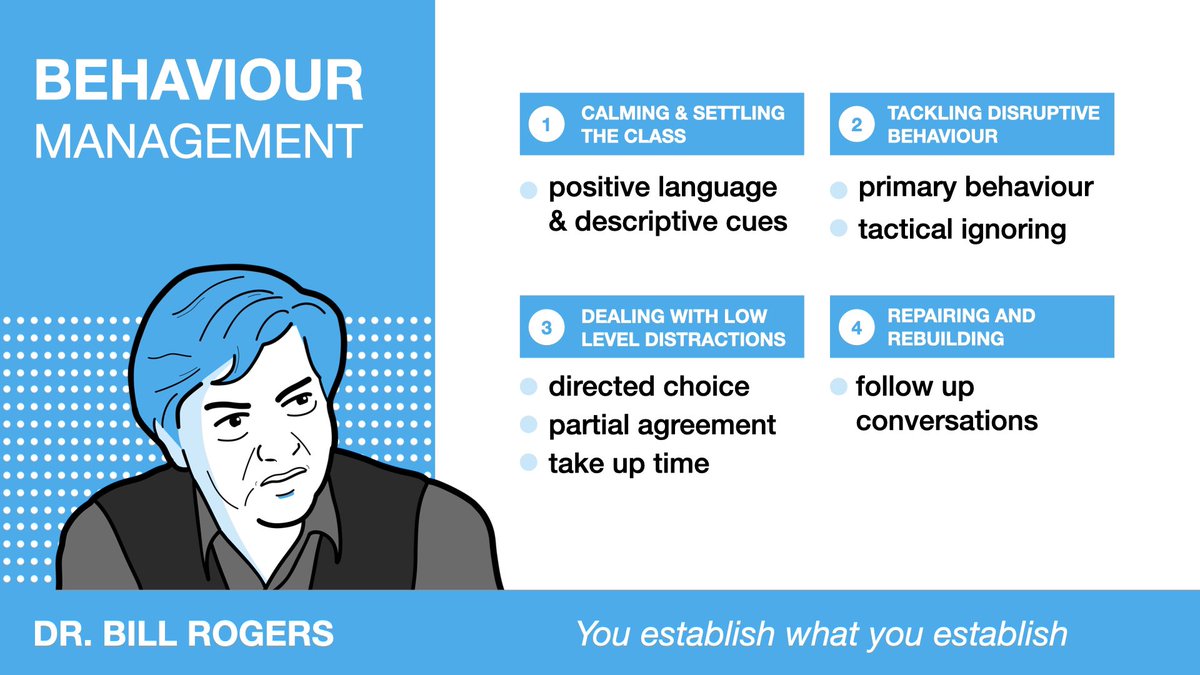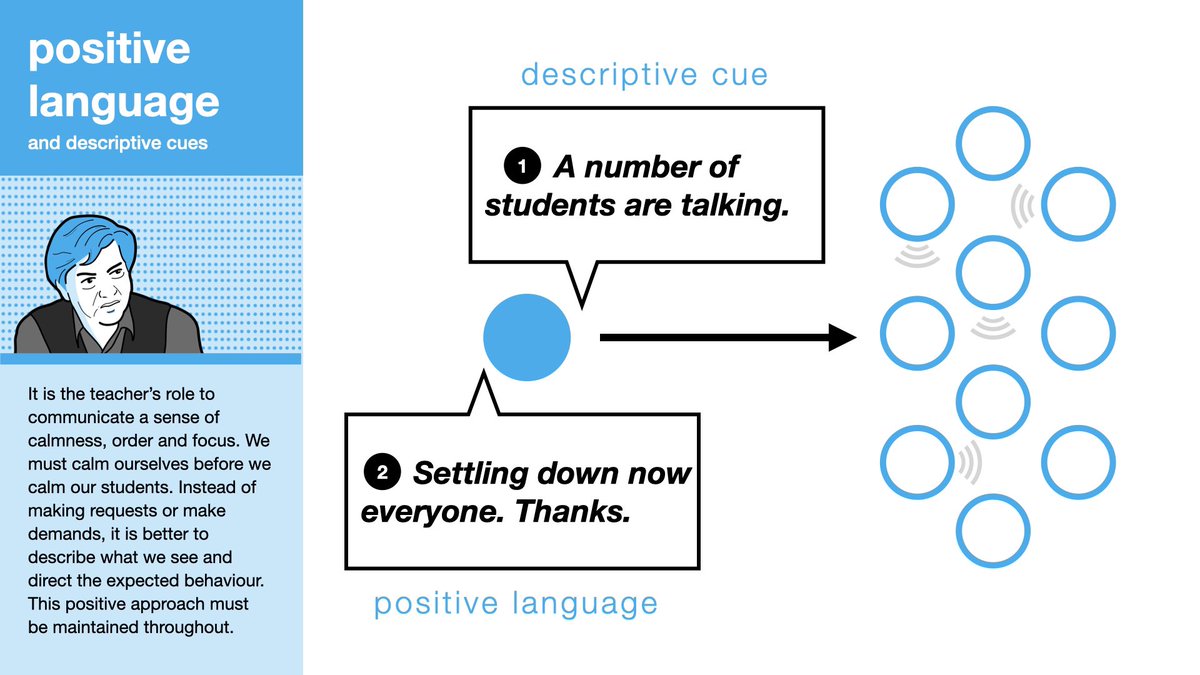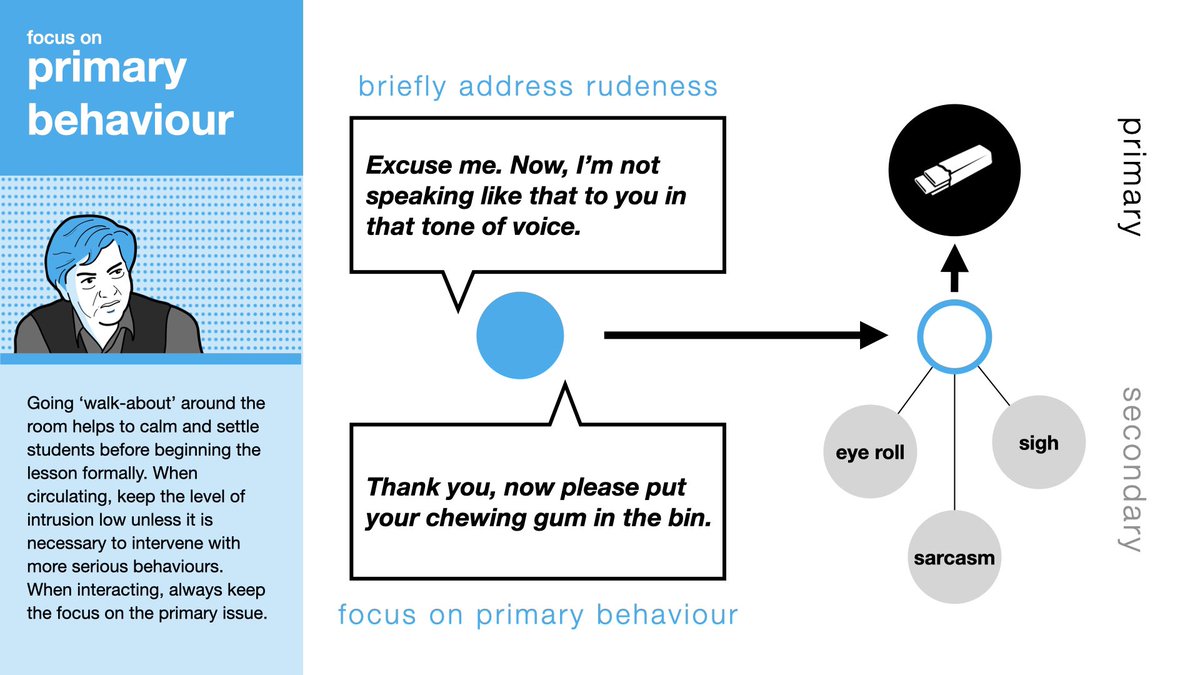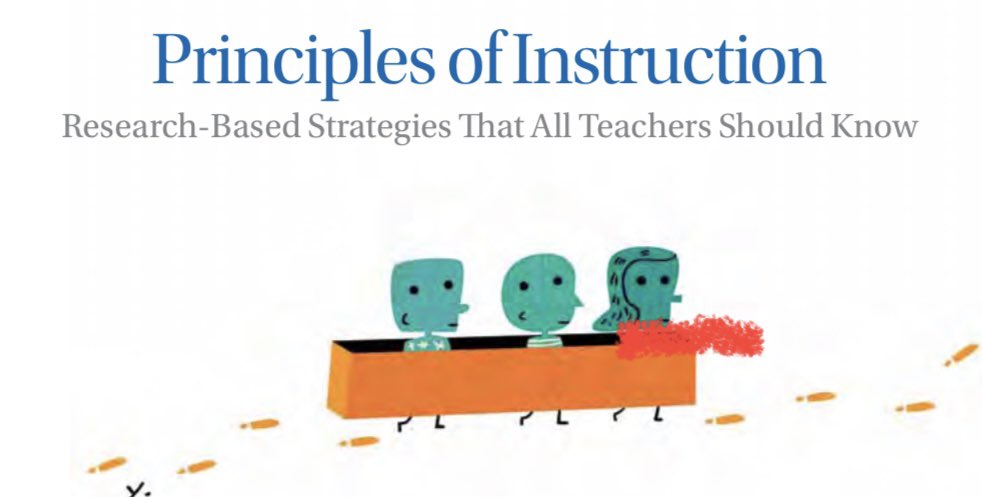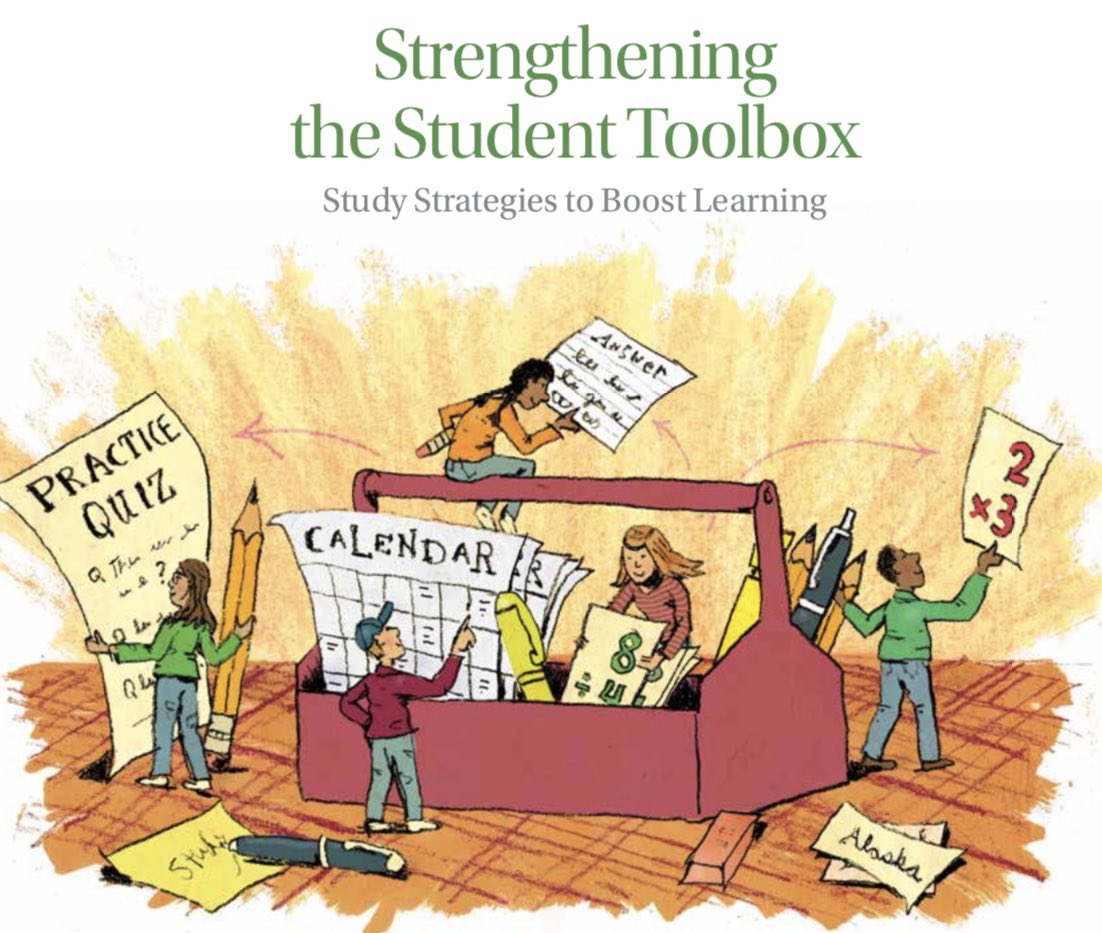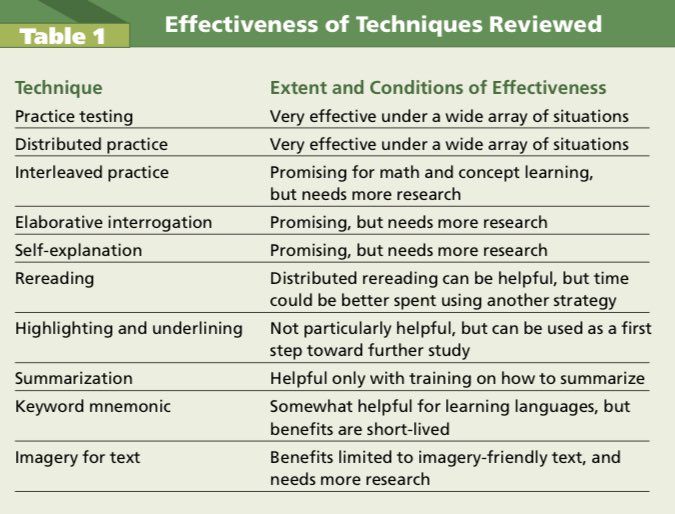***BEHAVIOUR MANAGEMENT ***
🧵 In this thread, I have summarised some of Dr Bill Rogers’ top behaviour management strategies. Each one is supported with an old-school video.
“You establish what you establish”
🧵 In this thread, I have summarised some of Dr Bill Rogers’ top behaviour management strategies. Each one is supported with an old-school video.
“You establish what you establish”
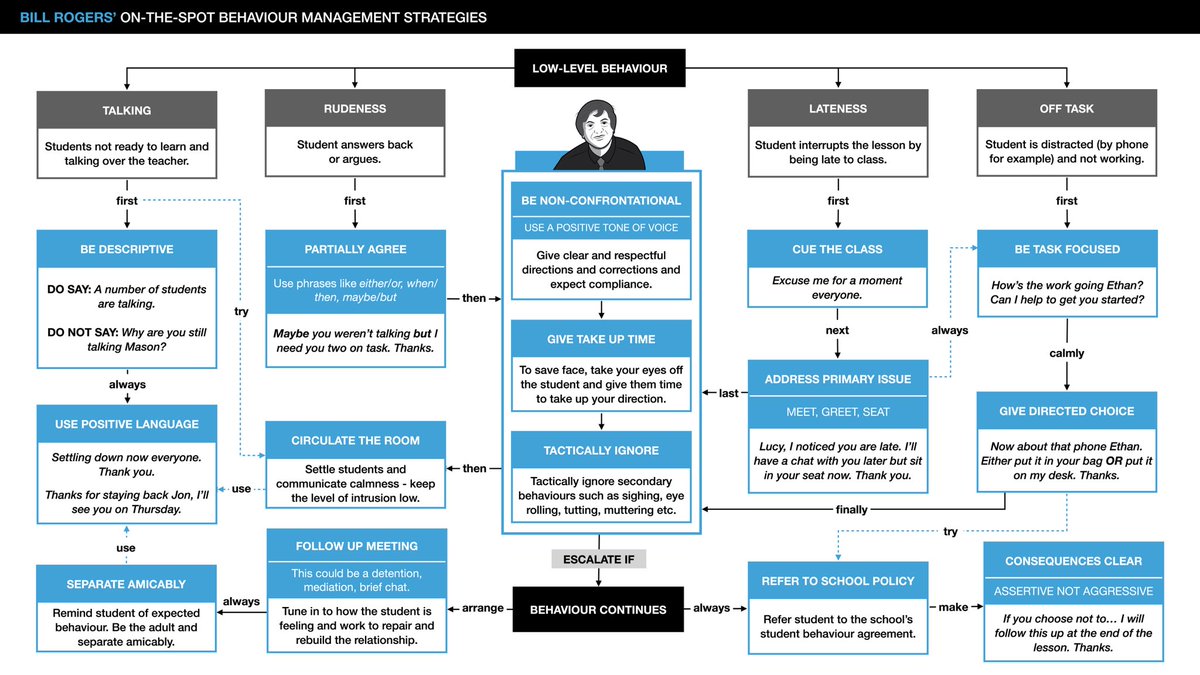
POSITIVE LANGUAGE
Communicate calmness & focus. Instead of making demands or requests, describe what you see: “A number of students are talking.” Give confident & respectful directions to cue in expected behaviour: “settling down everyone. Thanks.”
📼
Communicate calmness & focus. Instead of making demands or requests, describe what you see: “A number of students are talking.” Give confident & respectful directions to cue in expected behaviour: “settling down everyone. Thanks.”
📼
FOCUS ON PRIMARY BEHAVIOUR
Walk the room & settle small groups before the lesson. Keep intrusiveness & confrontation low. Be the adult by focusing on the primary behavioural issue if/when disruption arises.
📼
Walk the room & settle small groups before the lesson. Keep intrusiveness & confrontation low. Be the adult by focusing on the primary behavioural issue if/when disruption arises.
📼
TACTICAL IGNORING
Unless serious, tactically ignore secondary — often non verbal — behaviours (sighing, eye rolling) that students exhibit on receipt of teacher correction. Keep the focus on the acknowledgment of good behaviour.
📼
Unless serious, tactically ignore secondary — often non verbal — behaviours (sighing, eye rolling) that students exhibit on receipt of teacher correction. Keep the focus on the acknowledgment of good behaviour.
📼
DIRECTED CHOICE
During on-task activities, students may be doing the wrong thing (phone, ear phones in). Make consequences clear & leave responsibility with them using directed choice: “I want you to put your phone in your bag or put it on my desk.”
📼
During on-task activities, students may be doing the wrong thing (phone, ear phones in). Make consequences clear & leave responsibility with them using directed choice: “I want you to put your phone in your bag or put it on my desk.”
📼
PARTIAL AGREEMENT
Partial agreement is a tactic that gets you back to the primary issue without being led into conflict. Partially agreeing with students diffuses potential arguments: “Maybe you weren’t taking but now I want you to finish the task.”
📼
Partial agreement is a tactic that gets you back to the primary issue without being led into conflict. Partially agreeing with students diffuses potential arguments: “Maybe you weren’t taking but now I want you to finish the task.”
📼
TAKE UP TIME
It is important to give students time to respond to the teacher’s instruction. Take up time allows for face saving & building cooperation. The teacher might deliberately move or look away after saying, “Omar, come to my desk please.”
📼
It is important to give students time to respond to the teacher’s instruction. Take up time allows for face saving & building cooperation. The teacher might deliberately move or look away after saying, “Omar, come to my desk please.”
📼
FOLLOW UP CONVERSATIONS
Tune into students’ feelings & hear them out. The focus of the meeting should only be on the misbehaviour. Refer them back to the school’s student behaviour agreement. Always separate amicably.
📼
Tune into students’ feelings & hear them out. The focus of the meeting should only be on the misbehaviour. Refer them back to the school’s student behaviour agreement. Always separate amicably.
📼
📼 Here are the links to clips from Bill’s classic VHS videos. Download the PDF here: bit.ly/3Pf6b3J 
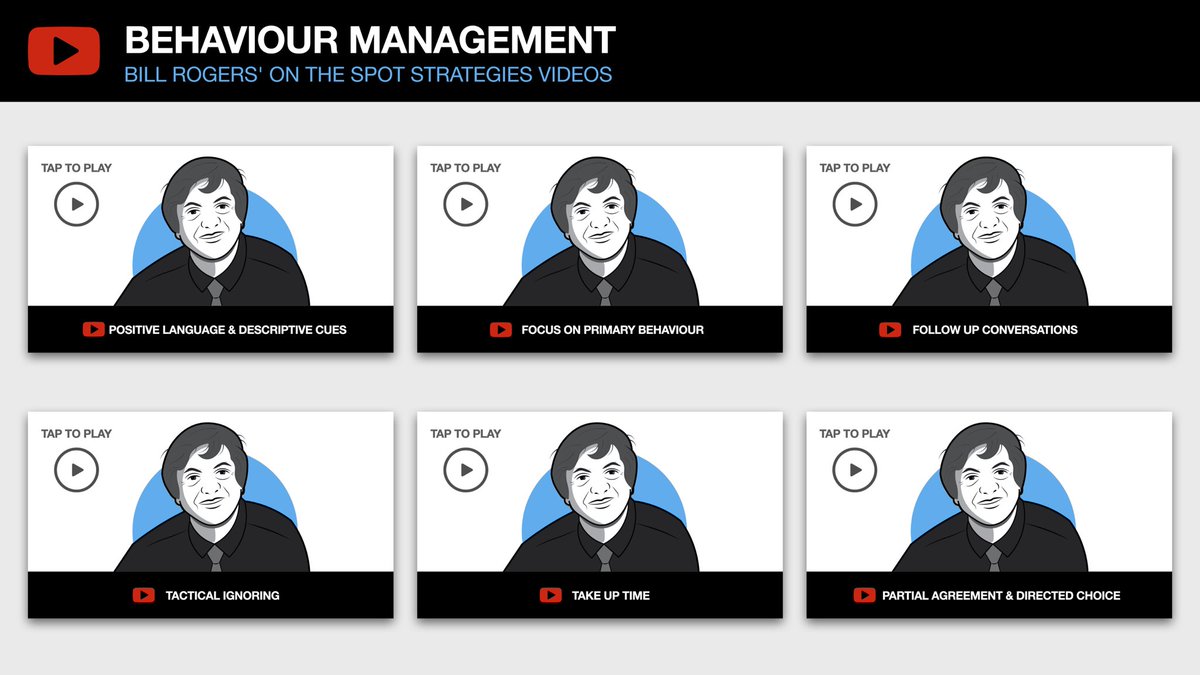
Finally, here’s a classic blog post by the prolific @teacherhead on Bill’s main ideas. Enjoy!
teacherhead.com/2013/01/06/beh…
teacherhead.com/2013/01/06/beh…
• • •
Missing some Tweet in this thread? You can try to
force a refresh

 Read on Twitter
Read on Twitter

